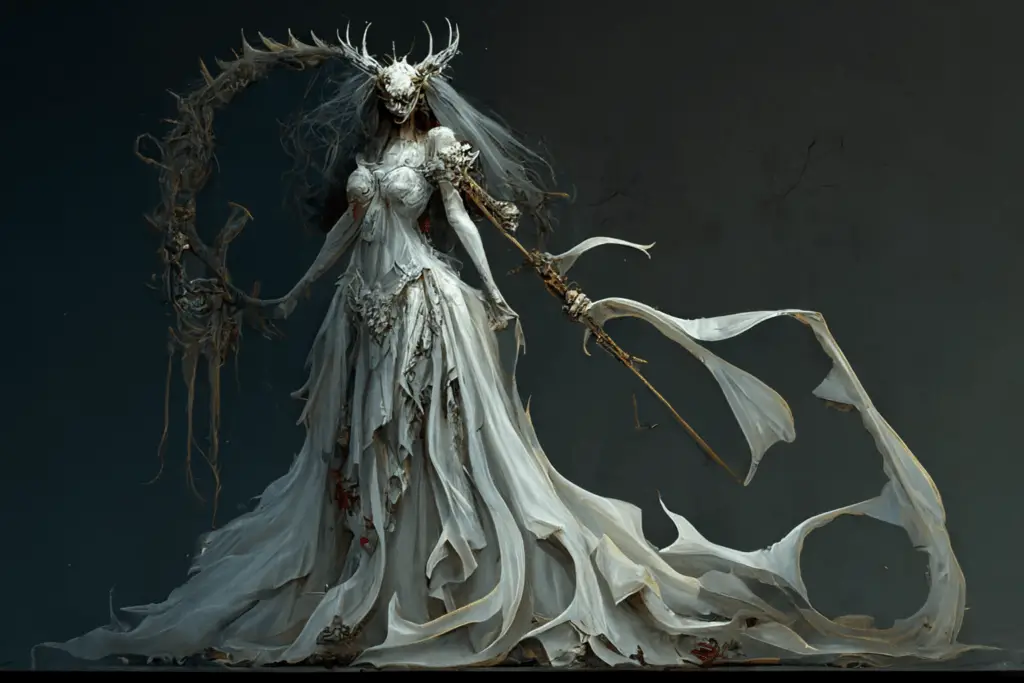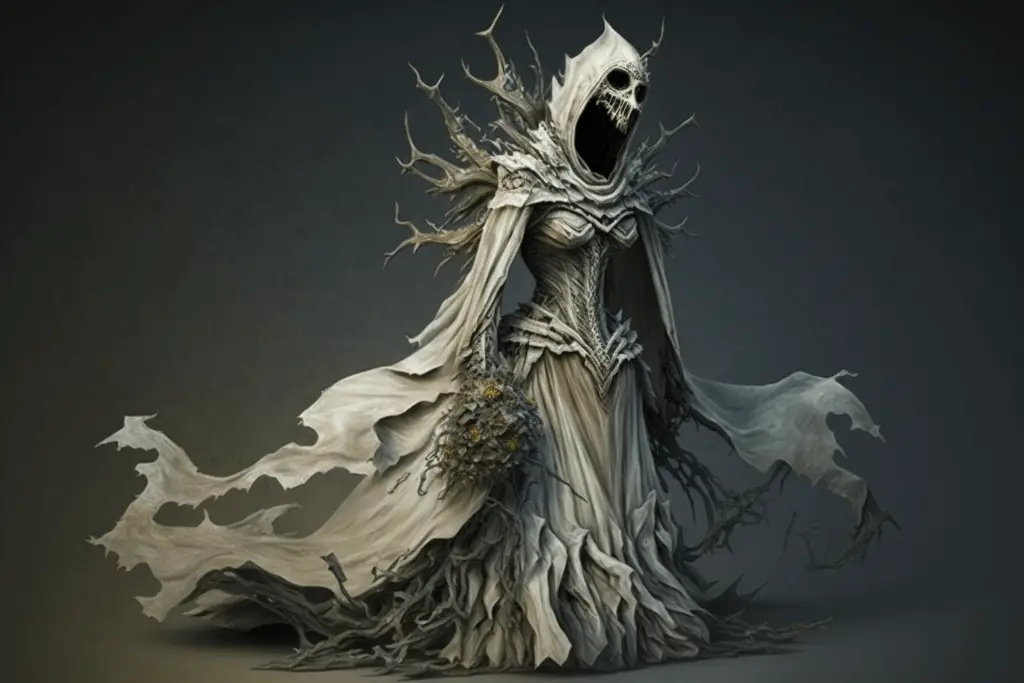Share the Lore!
By: Alex Postrado
Slavic Folklore’s Field-Lurking Demon Of Noontide
Who says evil only lurks in the dark?
Ancient Slavic people would surely disagree with that and it is because they know someone — or something — that can make whoever coined that particular idea reconsider.
The name is Poludnitsa.
In English, we know her as Lady Midday.
A Slavic demon that thrives best on hot, summer days when the sun is at its highest point.
She carries a weapon with her at all times:
A sickle, a scythe, or a pair of shears — depending on who is telling the story.
But one thing that every version of the lore got right about Lady Midday is that meeting her would almost always lead to something fatal.
As for the somewhat fortunate few who have allegedly survived their encounters with the feared noon devil, well, they still weren’t completely let off the hook once they’ve returned to their homes.
With all that, it seems like Lady Midday is — indeed — hell-bent on causing suffering to people who choose to test her temper every time it is noontide.
A purely black-hearted fiend of high noon or a misunderstood phenomenon that just so happened to drive the old Eastern Europe out of its mind?
Here comes the story of Lady Midday!
Who is Lady Midday?
As mentioned earlier, Lady Midday has her origins rooted in Slavic mythology.
In the original lore, she was mainly called by the name Poludnitsa, which translates to “Midday Spirit” in English — hence the name, Lady Midday.
Poludnitsa is derived from the Slavic polden or poluden — meaning, “half-day” or “noon“.
The name also has a slew of variations — separate from the English one — that are used in other Eastern European countries.
For instance, in Poland and Slovakia, Lady Midday is referred to as Południca; in Czech, the name is Polednice; Připołdnica is used by the Wendish people of Germany; Poloznicha in the Komi region of Russia; and the West Germanic language, Yiddish, prefers the name Chirtel Ma.
Though Lady Midday goes by a lot of different names, the part of the narrative where she is said to be a devilish noon witch is one that cuts across languages.
And with that, emerged another name:
Noonwraith — a name that easily distinguishes what Lady Midday is all about.
She is a female fiend that rules at noon — particularly lurking in the fields or in the woods, waiting for victims to pass by.
Because she is said to be a supernatural entity, Lady Midday — according to the myth — can transform into several unique forms.
One of which is as whirling dust clouds, also known as dust devils.
Some believe that when she wants to approach a person, the dust clouds would slowly solidify, allowing her to then take the form of either of these three:
The first is an innocent-looking, young girl that is claimed to be about the age of twelve.
Second, a tall, long-haired, and sickle-carrying woman dressed in white — which has its own two variations.
Some say that Lady Midday is a noon demoness that, albeit pale-skinned, is deceptively beautiful.
While others argue that that specific image is actually a romanticized rendering of her appearance — noting that in the original story, she is way creepier due to her repugnantly rotting skin and ever-decaying bones.
The third form that Lady Midday is believed to take is that of the classic old hag.
Similarly clad in a white, flowing dress, this last form exposes an old and ugly, ruffled-haired fiend that has nothing else in mind, except hurt people.

Many ancient Slavs considered this as Lady Midday’s “only real form“.
The form that right off the bat shows the true nature of the demon in the fields.
How Lady Midday Attacks
While a sickle, a scythe, and a pair of shears all symbolize harvest in some way, they were not the only weapons Lady Midday was known to use to make her victims suffer.
The lore has it that she also harasses those working in the fields at high noon in sundry ways — including, pulling their hair; giving them hallucinations; causing aches in their neck; and cursing them with heat strokes, other illnesses, and sometimes, even madness.
She is also said to not just harm working folks, but also misbehaving children that still tread by the fields despite their parents, warning them not to.
As soon as Lady Midday is face to face with her victim, she would open a life-and-death conversation and pester the unfortunate ones with difficult questions.
If you ever end up in that situation, though, be very careful.
Failure to give the correct response would earn you an enraged noon witch!
And when that happens, you better run if you can.
The myth says that Lady Midday will try to decapitate a victim just for answering incorrectly — the exact same consequence that they would face if they try to change the subject instead of giving the right answer.
The lore of Lady Midday — in spite of all this cruelty — has likely inspired a number of other tales in much of the ancient Slavic region.
The Cornflower Wraith of the Upper Silesian town of Prudnik is among the noteworthy examples of folkloric beings that draw many similarities to Lady Midday.
Instead of wearing white, however, this particular wraith dons an azure dress.
She is also believed to wear cornflowers in her hair while she roams the fields — on the lookout for people who trample on grains or use sharp tools.
Her punishment for these ranges from headaches and low back pains to paralysis or even mutilation.
Good thing, people still have a way to avoid incurring the wrath of the Cornflower Wraith!
All they need to do is to avoid working during the midday — logic that applies, as well, if someone wants to steer clear of Lady Midday.

Lady Midday in Pop Culture
With Lady Midday’s prominence in Slavic mythology, pop culture cannot possibly turn their heads back from the noontide devil.
As a matter of fact, the influences of the lore of Lady Midday appear in quite a few pop culture references.
The Witcher video game series is probably the best known among the bunch.
In there, Lady Midday was introduced more like a wraith of some species — going by the name of noonwraiths — and less as a singular entity.
These noonwraiths dance madly in circles all day long. And those that are caught watching them will be forced to join their seemingly exhaustless prancing.
No one who ever joined made it out of the circle alive.
That is because the noonwraiths only stop when the sun goes down. And by that time, the human victims were already long worn out to death.
Geralt, the protagonist of The Witcher, meets both noonwraiths and nightwraiths in the games.
The first encounter happens in the “idyllic fields surrounding the village of Murky Waters“.
Another worthy of mention influence of Lady Midday can be found in Antonín Dvořák’s symphonic poem, “The Noon Witch“.
It is about a mother who accidentally summons Lady Midday while disciplining her son.
The plot leads to a regretful ending, though, as they go about a long chase with Lady Midday, only for the mother to faint and suffocate her son.
Does Lady Midday Exist?
As interesting as Lady Midday is, she is largely considered to only be a character of folklore.
Back in the ancient days, people didn’t really have that much of an understanding of a lot of natural phenomena — including the reasoning behind things like heat stroke and other dangers caused by overexposure to the sun.
At the time, all that they know is if someone goes to work the fields by noon, something bad is going to befall them.
Or worse, they could even meet their end!
And while merely knowing this already gave ancient Slavs the creeps, it also did not help that those that have survived the noontide reign of Lady Midday claimed to have seen a humanoid entity — explained by science, nowadays, as Fata Morgana or a mirage.
Of course, today, we already know that prolonged exposure to the sun’s heat can cause hallucinations.
And as for the whirling dust clouds that frequent fields across the world, we have weather science to expound that.
But, in a time when mankind is yet to discover all that, it sure would be easier to blame someone — in this case, Lady Midday — than to have no kind of explanation at all for the afflictions and deaths seen every noontime.
And so, folklore birthed the terror that is Lady Midday.
A modern-time personification of sunstroke and heat exhaustion, and an ancient reason to keep the blistering grip of death at arm’s length.
References:
Lady Midday - Arts and Culture Lady Midday – ‘Poludnica’- An Evil, Elusive Female Field-Spirit In Slavic Beliefs That Comes To Kill At Noon What you need to know about Lady Midday Południca/Poludnitsa/Noonwraith – Slavic Demon of Noon – Slavic Mythology Saturday The Myth Behind The Monsters of The Witcher 3 Noonwraith - The Witcher
